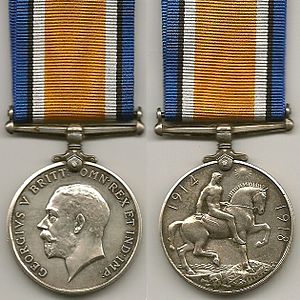Personal Details
Born: 9 March 1895 in Tilstock, Shropshire and baptised 19 May 1895 at Tilstock Parish Church, Tilstock.
Family: He was the youngest of four children born to Thomas James Anthony, a schoolmaster and his wife Harriet, nee Creswell. Harold also had eight half siblings. He married May Hughes on 9 June 1920 in Brantford, Brant, Ontario, Canada. No children can be found for the couple.
Residence: In 1901 he and his family were living in the School House, Tilstock, Shropshire. By 1911 he had moved with his widowed father to Tushingham, Cheshire. He emigrated to Canada in 1911, arriving on 4 May. In 1917 he was living in Branchton, Ontario. On his marriage in 1920 he gave an address of 23 Ainsley Street, Galt, Ontario but in 1921 he and his wife had moved to North Dumfries Township, Waterloo South, Ontario. An address of Felix Avenue, Windsor, Essex was given to him in 1957 on the Canada Voters List. At the time of his death in 1970 he was probably living in Windsor, Essex County, Ontario.
Employment: In 1911 he was a tailor`s assistant. At the time of his marriage he stated that his occupation was a farmer. The 1921 census shows him as a labourer and the 1957 voter’s list shows him as a foreman.
Died: In 1970 and buried in Windsor, Essex County, aged 75
Military Details
Regiment: Canadian Expeditionary Force
Rank: Lance Corporal
Service Number: 3133902
Date of Enlistment: 11 May 1918
Date of Discharge: 19 June 1919
Reason for Discharge: Demobilisation
Other Information: His brother, Ernest Patterson Anthony, also served with the Canadian Expeditionary Force during WW1; another brother, Frederick Anderson Grant, also served as a Sergeant in the King`s Shropshire Light Infantry in WW1
Harold was awarded the British War Medal

The British War Medal is a campaign medal of the United Kingdom which was awarded to officers and men of British and Imperial forces for service in the First World War. Two versions of the medal were produced. About 6.5 million were struck in silver and 110,000 in bronze, the latter awarded to, among others, the Chinese, Maltese and Indian Labour Corps.

